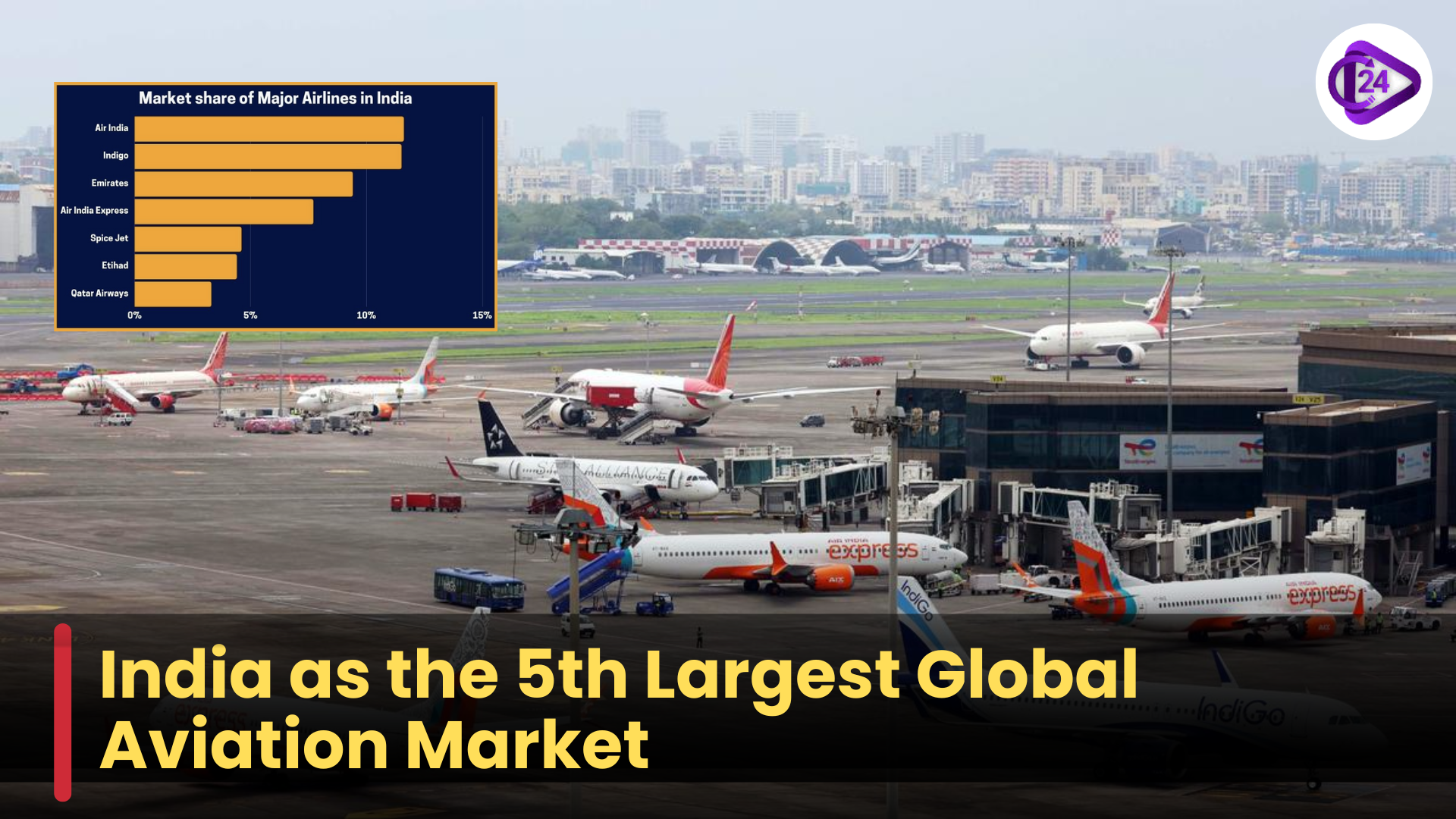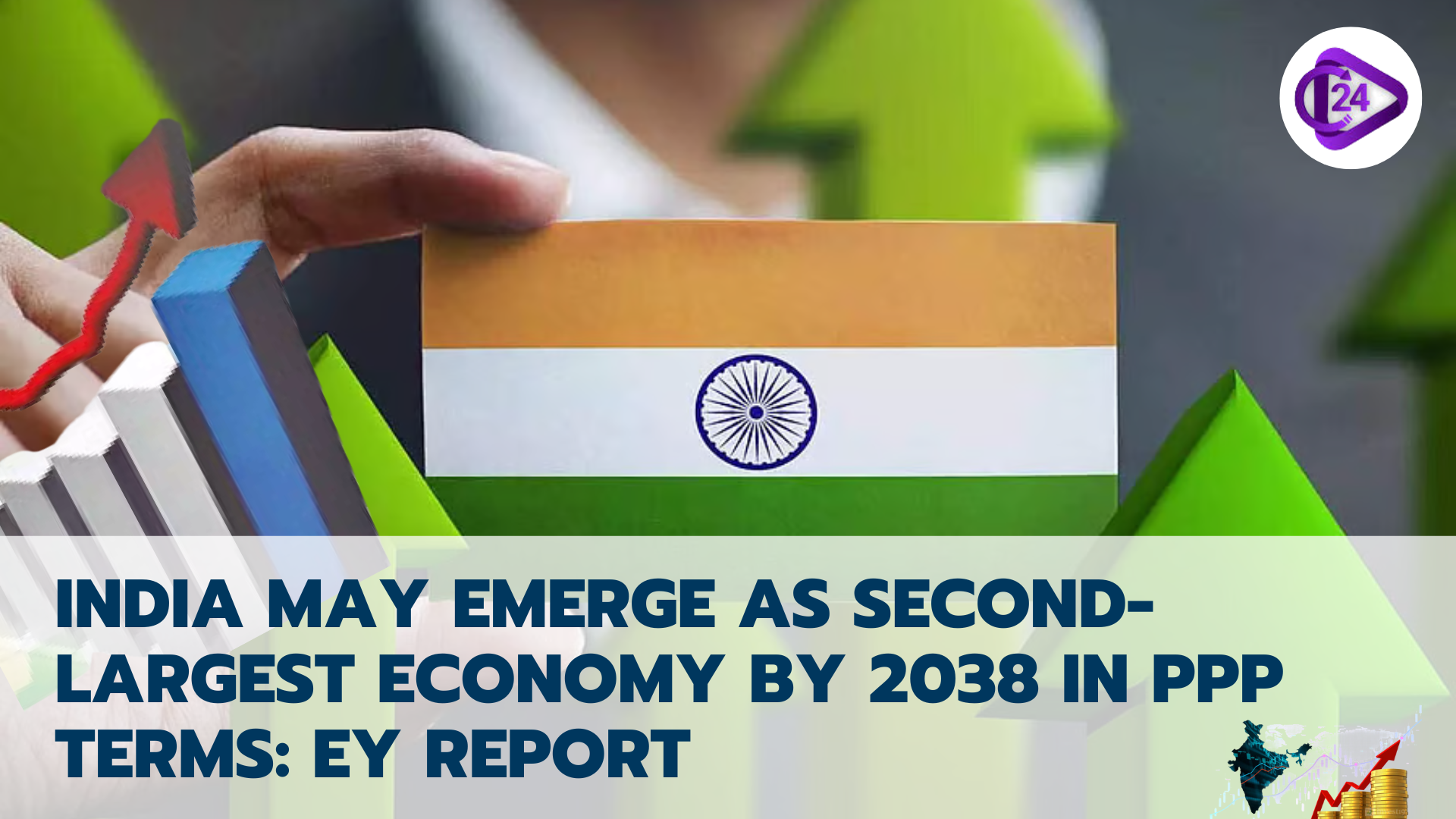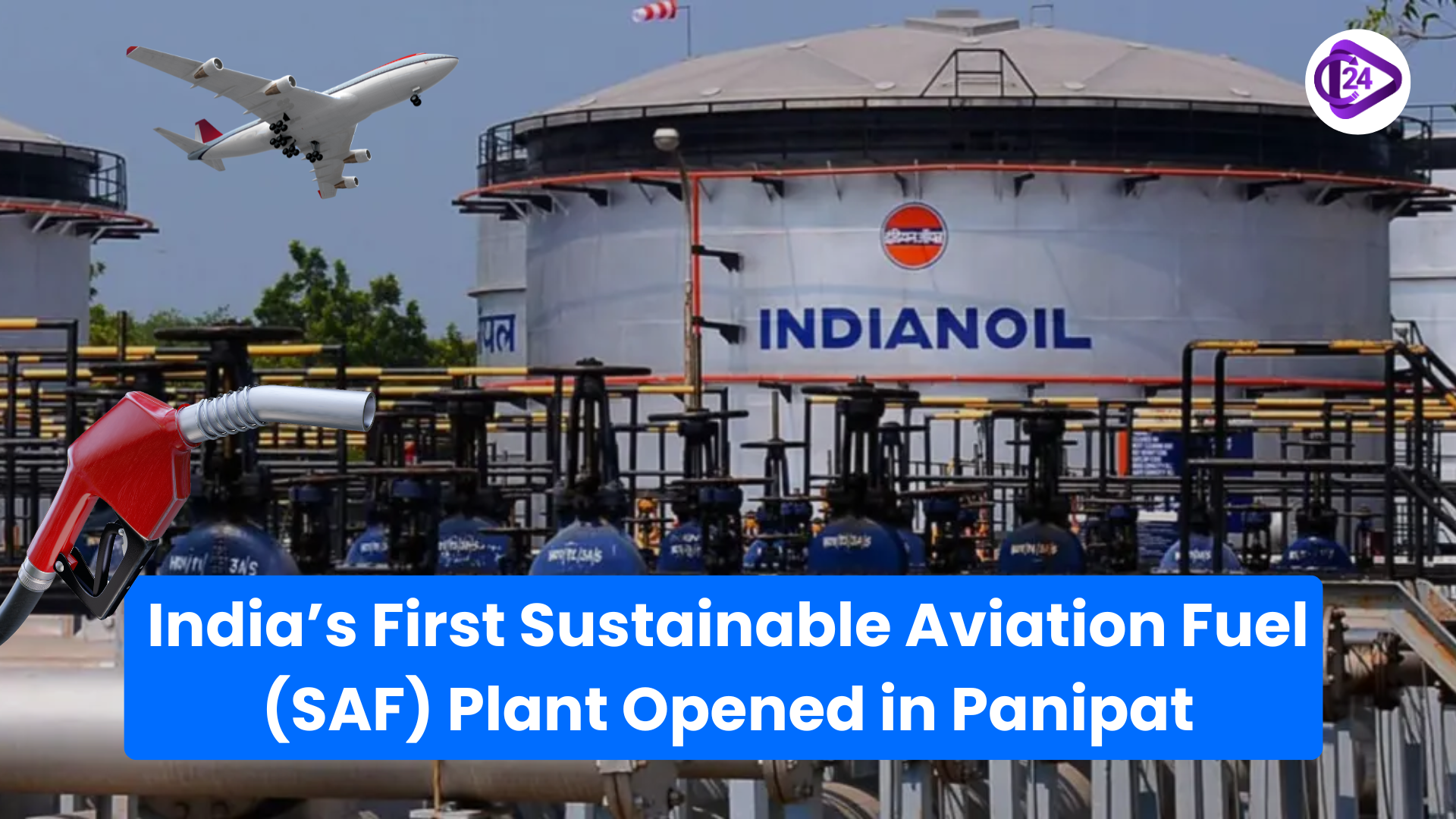
In 2024, India was the 5th largest aviation market in the world as per World Air Transport Statistics (WATS) by IATA. This nation registered 211 million air passengers and ranked ahead of Japan with a great increase of 11.1% compared to 2023. It is a huge milestone in aviation and transport sector growth in India.
Context
-
India has become the 5th largest aviation market globally, as per the newest World Air Transport Statistics (WATS) published by the International Air Transport Association (IATA).
-
It also managed 211 million air passengers in 2024 compared to Japan and a 11.1 percentage increase over 2023.
Key Highlights
|
Rank |
Country |
Total Air Passengers (2024) |
|
1 |
USA |
876 million |
|
2 |
China |
741 million |
|
3 |
UK |
261 million |
|
4 |
Spain |
241 million |
|
5 |
India |
211 million |
|
6 |
Japan |
205 million |
-
Mumbai to Delhi air-route was rated 7th in the world with 5.9 million passengers.
-
Asia-Pacific routes remain very dominant in air routes.
-
The busiest in flow was the JejuSeoul route with 13.2 million passengers.
Importance
-
Economic Indicator
-
Indicates a healthy domestic demand, growth of the middle-income, and urbanisation.
-
Increases industries like tourism, hospitality, infrastructure, and logistics.
-
-
Infrastructural Planning
-
Stimulates development of airports, prestigious locations in aviation and UDAN (Ude Desh ka Aam Nagrik) scheme.
-
Promotes the aims and intentions of Make in India and National Civil Aviation Policy (NCAP).
-
-
Employment Generation
-
The aviation industry sustains millions of direct and indirect employment.
-
Engineers, ground handling staff, air traffic controllers, etc. skilled manpower is required.
-
-
Global Connectivity
-
Increases the ability of India to connect to international supply chains and passenger movement.
-
Fosters two-sided air service concurrence (ASAs) and calculated airline relations.
-
Contributing Factors to India’s Rise
-
Pent-up travel recovery heat of domestic aviation post COVID.
-
Expansion of low cost carriers such as IndiGo, Akasa Air, Air India Express.
-
Such are government programs as:
-
UDAN Scheme: Promoting regional connectivity
-
Modernisation and privatised airports
-
National Infrastructure Pipeline and Gati Shakti
-
-
New player entry and investments on the expansion of the fleet and airport infrastructure
Challenges Ahead
|
Category |
Challenges |
|
Infrastructure |
Airport congestion, need for second airports in metros, inadequate MRO facilities |
|
Environmental |
High aviation-related carbon emissions, lack of green fuel options |
|
Regulatory |
Complex clearance systems, lack of a single-window policy for aviation |
|
Cost Structure |
High aviation turbine fuel (ATF) taxes, airport charges |
|
Skilled Manpower |
Shortage of trained pilots, maintenance crew, and ground staff |
Government Programme and Policy Framework
-
National Civil Aviation Policy (2016) -– this policy strives to ensure flying will be affordable and there will be more connectivity.
-
UDAN Scheme -it has the benefit of encouraging regional air connectivity by subsidizing and incentivising it.
-
Aircraft Amendment Act (2020) on its part reinforces safety regulation and norms of airworthiness.
-
Build carbon-neutral and energy efficient airports (Green Airports Initiative).
-
Public-Private Partnership (ppp) model -development and operation of airports.
The World-Wide Trends and Implications
-
The Asia-Pacific Region is becoming one of the main engines of Aviation expansion in the world.
-
The emergence of India is an indication that the global power in aviation is shifting to an emerging economy.
-
Gives strength in placing negotiations in international aviation, including policies of the ICAO.
-
Promote aviation and airport infrastructure foreign investment and FDI.
Way Forward
-
Upgrade Tier-2 and Tier-3 cities airport facilities.
-
RE-ATF to make the taxation system more rational, and thus decrease operational expenses.
-
Increase training institutes and aviation universities so as to develop competent manpower.
-
Encourage green fuels (SAF) and carbon offset schemes.
-
Improve airspace control and increase traffic control system digitalisation.
-
Encourage innovation by using startups in aviation technology (examples: use of drones, AI-driven logistics).
Conclusion
The becoming of the 5th largest aviation market of India by the year 2024 is quite significant in indicating the growing global presence, increased consumer ambitions, and marketing infrastructural transformation led by the government. In order to maintain this impetus, India will need to invest strategically in green, inclusive and resilient aviation infrastructure alongside maintaining the policies of ensuring passenger safety, economic viability and environmental sustainability.



 Bihar Cabinet Approves Mukhya Mantri Mahila Rozgar Yojana to Empower Women Entrepreneurs
Bihar Cabinet Approves Mukhya Mantri Mahila Rozgar Yojana to Empower Women Entrepreneurs Nearly 60% of MGNREGS Budget Already Spent in First 5 Months of Financial Year
Nearly 60% of MGNREGS Budget Already Spent in First 5 Months of Financial Year India May Emerge as Second-Largest Economy by 2038 in PPP Terms: EY Report
India May Emerge as Second-Largest Economy by 2038 in PPP Terms: EY Report Unleashing India’s Power Sector: Key to Economic Competitiveness
Unleashing India’s Power Sector: Key to Economic Competitiveness Nari Shakti Leading India's Economic Transformation Towards Viksit Bharat
Nari Shakti Leading India's Economic Transformation Towards Viksit Bharat PM Modi to Inaugurate SEMICON India 2025 – India’s Biggest Semiconductor & Electronics Show
PM Modi to Inaugurate SEMICON India 2025 – India’s Biggest Semiconductor & Electronics Show Private Sector Share in Defence Production Increases to 22.5%
Private Sector Share in Defence Production Increases to 22.5% India’s First Sustainable Aviation Fuel (SAF) Plant – Used Cooking Oil
India’s First Sustainable Aviation Fuel (SAF) Plant – Used Cooking Oil India Becomes World’s Third-Largest Automobile Market: Nitin Gadkari
India Becomes World’s Third-Largest Automobile Market: Nitin Gadkari India’s Pesticide Market Sees Major Shift Towards Herbicides
India’s Pesticide Market Sees Major Shift Towards Herbicides






